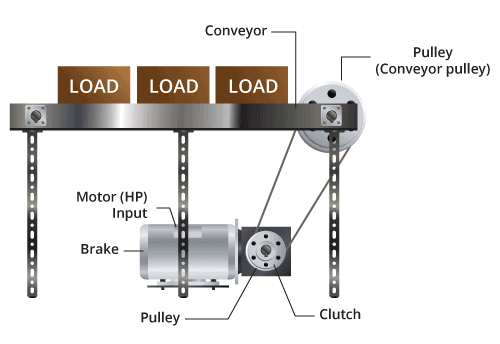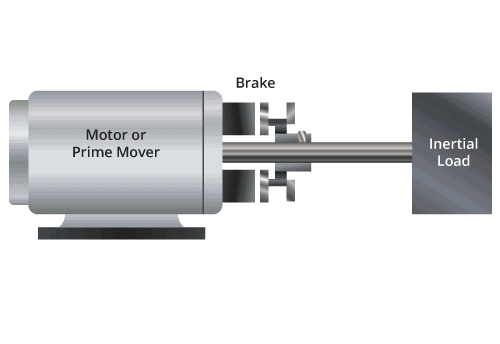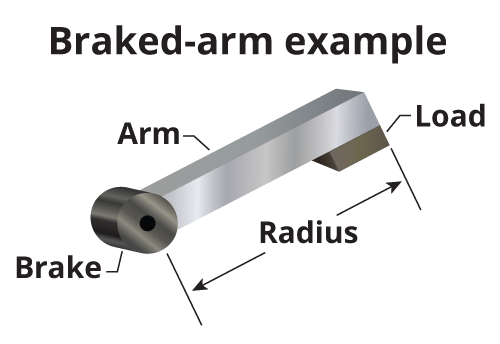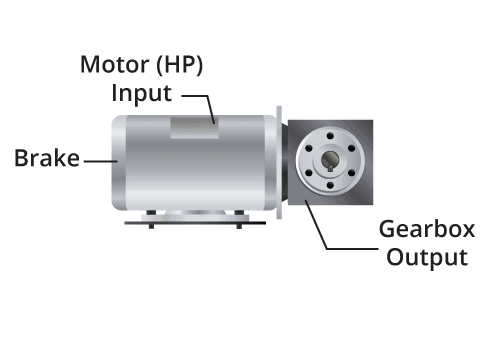Torque Calculator
With over 30 years’ experience manufacturing electromagnetic clutch and brake solutions for a wide range of applications and industries, our team has continued to find ways to refine and simplify the purchase journey for our customers. One of the first essential steps in determining accurate clutch and brake selection is to understand the specific torque requirements for the application.
This resource page includes 4 individual Torque Calculators designed by our team to help you determine your unique torque requirements. Simply click on the relevant tab in order to view your calculator of choice and apply the necessary inputs to generate an accurate torque rating. Included with each calculator is a description and illustration to represent common applications that are applicable to the type of torque being viewed.
If your variables require conversion to the necessary unit of measure for calculation, simply click on the animated arrow to the left or scroll to the bottom of the page to access our conversion calculators for common expressions.
For more information, check out our Blog Post: How to Calculate the Torque Required When Sizing a Clutch or Brake where we break down each calculation step by step using case specific variables and offer product recommendations from our catalog based on the final torque ratings. If you require further assistance in determining your inputs, please contact us and a member of our team will be in touch shortly to assist you!
Select Your Type of Torque
- Calculating Torque When the Horsepower is Known
- Starting/Stopping Torque
- Holding Torque for a Brake Application
- Torque vs. Speed
TH = 63,024 x ((P x K)/ω)
Calculating Torque for a Clutch or a Brake Application When the Horsepower is Known
When information about holding torque or load torque is unavailable, the horsepower of the motor can be used with a general formula to get a ballpark figure for Torque requirements. The value of “K” service factor is either 1.5 or 3 depending on the application. 1.5 is used when the application is “light duty” (Low cycle rate, dwell before starting and stopping) 3.0 when the application is “Heavy Duty” (High Cycle rate, continuous starting and stopping). Here are the variable definitions:
P = motor output power, HP
ω = motor speed, rpm
k= service factor

Formulas are to be considered reference only. Please consult SEPAC Engineering prior to final product selection.
TD = 0.1047(Iω)/t
Calculate Starting/Stopping Torque
To calculate the Torque required to start or stop an inertial load, the result is multiplied by a safety/service factor of 1.25. Consider the following variables:
I – Rotational load inertia, lb-in-sec2
ω – Differential slip speed, rpm
t – Time to speed, sec
Note: 0.1047 is a factor that converts rad/sec to rpm

Formulas are to be considered reference only. Please consult SEPAC Engineering prior to final product selection.
TH = WL + WA x R x 1.5
Holding Torque for a Brake Application
In certain applications, mounting a brake on an arm will hold a load from falling in the event that power fails or is removed. For these instances, determining load torque requires the holding torque and the weight of the arm (force x distance) multiplied by a service factor of 1.5. Here are the variables:
R = radius
WA= Weight of arm
WL = Weight of load
1.5 = Service factor

Formulas are to be considered reference only. Please consult SEPAC Engineering prior to final product selection.
TH = (T/GR) x K
Calculating Torque vs. Speed
For use cases that have a motor, drive, and a gearbox, it’s important that the brake be located at the high-speed end—most commonly the motor end. Mounting the brake on the motor end allows a smaller brake to be used, but it’s still important to properly calculate the torque required to hold the load. The value of “K” service factor is either 1.5 or 3 depending on the application. 1.5 is used when the application is “light duty” (Low cycle rate, dwell before starting and stopping) 3.0 when the application is “Heavy Duty” (High Cycle rate, continuous starting and stopping).
Determining this torque requires working backwards from the load using the following variables:
TH – Required holding torque
GR – Gear ratio
K – Service factor

Formulas are to be considered reference only. Please consult SEPAC Engineering prior to final product selection.